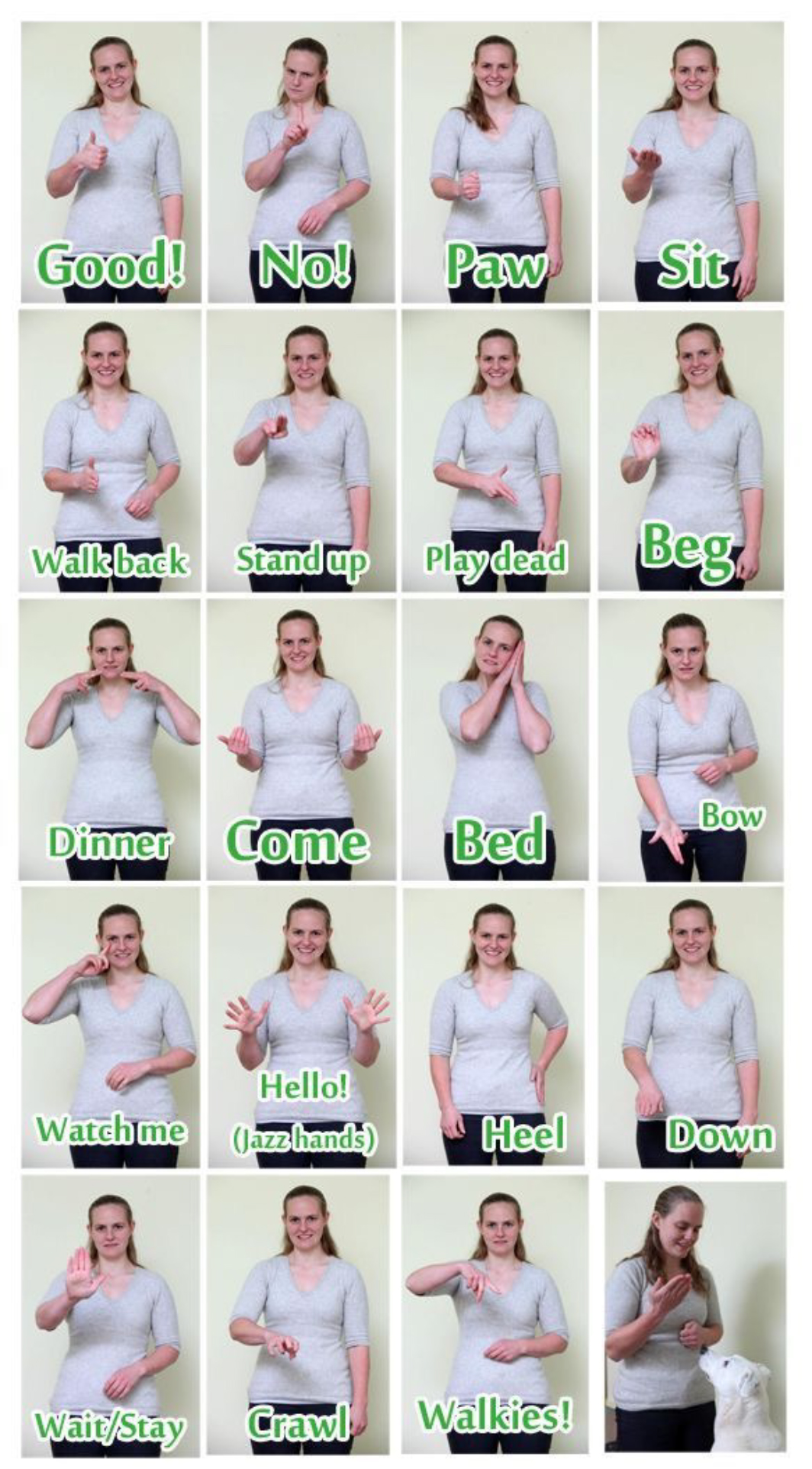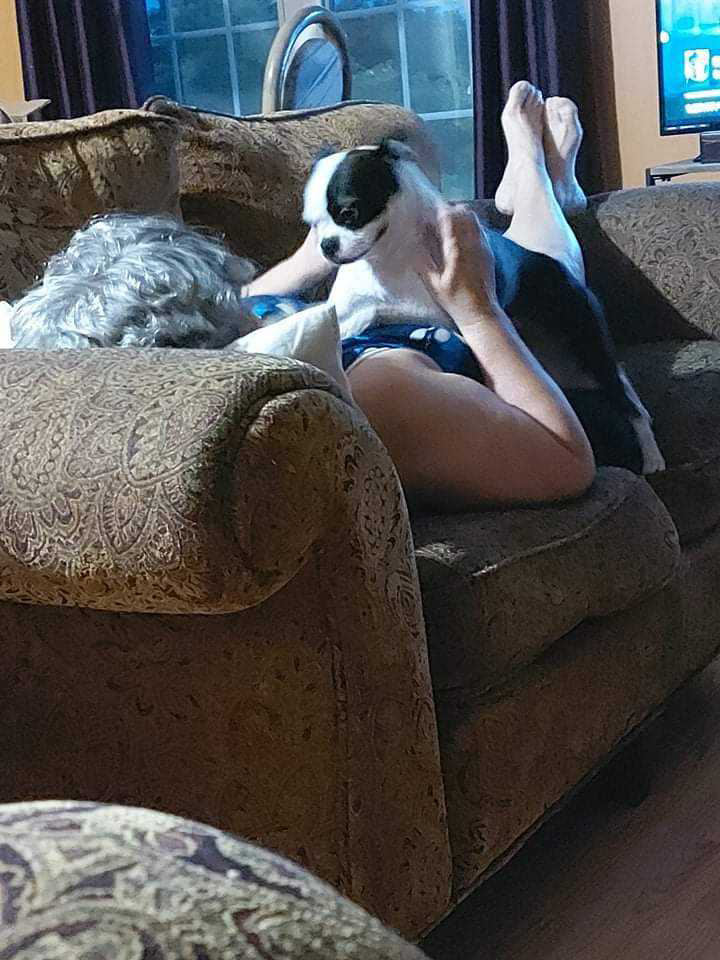While their ears may look supersonic, Boston Terriers are actually six percent more prone to unilateral (single ear) hearing loss than other breeds. Don’t let that get you down! With a few communication modifications, deaf dogs can live the same long and happy life as those with full hearing.
In celebration of ‘Deaf Dog Awareness Week,’ we’ve put together a few tips and tricks you can use to better communicate with your dog if they do not hear well due to genetics or age.
Sign Language
The first step, learn to communicate without speaking. Much like people, dogs are capable of learning sign language. Whether you make up your own, use ASL (American Sign Language) or the commonly used canine commands below. Whichever route you take, consistency is key. Make sure to use your signs during training sessions and as you go about your day.
 Photo credit: The Deaf Dog Network
Photo credit: The Deaf Dog Network
Assistive Devices
There are a variety of ways you can make your home work better for your deaf dog. We’ve all seen Bunny, the talking dog on Tiktok, who uses recordable buttons to communicate with her owners. A number of assistive devices like this exist, from hearing aids (yes, they make them for dogs!), to collar bells, to products that incorporate lights and vibrations to alert in the absence of sound. This trainer has a great DIY tutorial on how to make your own light-up clicker.
Waking and Alerting
Have you ever been startled by someone? Not a great feeling right? To avoid negative interactions, be sure to alert your dog to your presence through touch or vibration. Tug their blanket, place your hand in front of their nose, or stamp your feet lightly next to their bed to let them know you are there. This approach can also be applied to leash activities. Two gentle tugs mean go, one means stop and so on.
Remember: They’re Deaf
The most important thing to remember with a deaf dog is that the dog is deaf. They cannot hear their surroundings or when you attempt to call them out of danger. Make sure at all times they are leashed or in a secure off-leash area.
With small adaptations and a commitment to acting as your dogs ‘ears’ over the course of their lifetime, it’s as easy to love a hearing dog as it is a not-so-hearing dog.

Living with a Deaf Dog:
Meet BTRC Alum and Foster Fail Houdini
I have never owned or even met a deaf dog, and to be honest, I was a little intimidated. When she arrived, all she showed was fear. There was no curiosity, no joy, no love, no trust.
Initially, I gave her space and the autonomy to call the shots on our interactions. It took five months before she ventured onto the love seat with me. This was a huge turning point for her. I had begun to gain her trust, which enabled us to move ahead with training specific to her needs.
Houdini can now understand a few visual cues; car keys mean a short ride, holding up her leash means a walk, suitcases mean a trip, food bowl means it’s time to eat. Most importantly, holding my arms open to her an invite to snuggles and some love. Even though she can’t hear me, I still talk to Houdini. I’ve learned that she is always watching me, looking for cues and that my facial expressions and smile act as such.
Being loved and trusted by Houdini is one of the greatest accomplishments of my life. Don’t shy away from adopting a deaf dog. They are so eager to please and lovable beyond measure.

